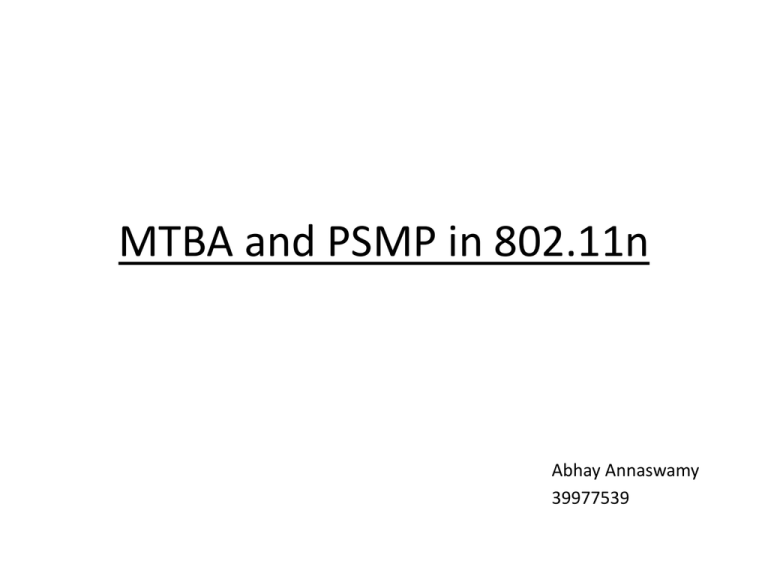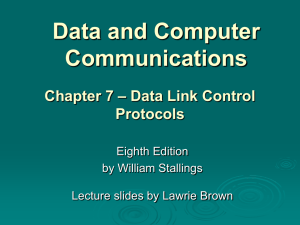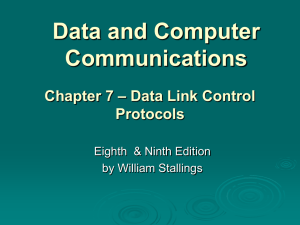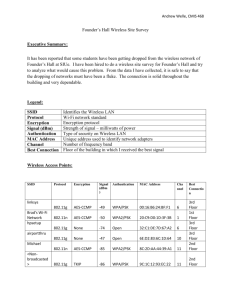MTBA and PSMP in 802.11n
advertisement

MTBA and PSMP in 802.11n Abhay Annaswamy 39977539 Introduction to 802.11n • 802.11n is the evolution of 802.11 a, b and g • IEEE 802.11 a, b and g provided speeds up to 54 Mbps where as IEEE 802.11n theoretically could provide speeds up to 600Mbps (nearly 10 times) • This meant that it could be used as a suitable alternative to wired internet as it accounted for bandwidth-hungry applications and also supported larger number of simultaneous users. 802.11n (contd….) • The reason for increased data rate was the usage of 4 independent spatial streams of data multiplexed using SDM. • MIMO(Multiple Input Multiple Output) antenna configuration is used. • 40 MHz wide channels and frame aggregation are couple of other enhancements. Advantages • It provided for increased range, increased capacity and higher data rates compared to previous 802.11 technologies like a, b and g. • Backward compatible with earlier technologies. Drawbacks/Technical challenges of earlier 802.11 versions • User data throughput could not be increased beyond a point due to 802.11 protocol overheads, inter-frame spacing, Physical Layer headers, contention process and acknowledgement frames. • Power save methods had to be improved upon to efficiently save and conserve power expended. Solution • Frame aggregation – packing multiple Data units/Frames together to reduce overall overheads. • Realised by Block Acknowledgement – Instead of transmitting ACK for every frame, multiple frames can be acknowledged together using a single BlockACK frame. • Polling and PSMP can also be used to save power consumed. Powersave in 802.11 • In traditional systems , power save polling was done by – Waking up, Station sends a PS Poll to AP – For every successful PS Poll, AP sends one packet of data(MPDU) – Before that Station has to DTIM beacon to find out if AP has data queued for it – The AP sends data with the More Data bit set to 1, if more data is buffered for this STA. – Upon receiving the data frame with the More Data bit set to 1, the STA sends another PS-Poll. After downloading all the buffered frames, the STA switches to sleep mode. – Resulted in high overhead and also inefficient power save method as stations just doze moderately. Solution Legacy Power Save Poll -> U-APSD/S-APSD -> PSMP • U-APSD : Unscheduled – Automatic Power Save Delivery – Service Period begins with Trigger and ends with a packet with EOSP bit set – Triggers frame is a QoS+Data or QoS+Null frame – No pre-set schedules of when to wake up Regular Powersave & U-APSD Legacy power save U-APSD PSMP - Power Save Multi Poll • Was developed as an enhancement of an existing 802.11e standard (APSD). • Was developed due to concerns of power consumption of MIMO based products thereby affecting battery life. • Working • AP will send a schedule during its own TXOP as to when to be awake to receive data and also schedule as to when to transmit. • Since this schedule is known Stations can sleep more and also at the same time not miss any frames MTBA – Multi TID Block ACK Evolution Single Data-Ack -> Block Ack -> Compressed Block-Ack for A-MSDU -> MTBA – ACK – Each data packet is acknowledged with an ACK packet -> results in more traffic and more time. – Enhancement :- Block ACK - Enables multiple frames to be transmitted and then acknowledged with a single ACK frame – 2nd enhancement :- Compressed BlockACK • To aggregate multiple data units with a single Timing ID(TID) so that overhead can be reduced. • It is an enhanced version of BA. In compressed BA, Fragmented MSDUs cannot be transmitted and hence the bitmap size is reduced from 1024 (64*16) bits to 64 (64*1) bits. – All the above BA methods can handle only single TIDs and in next slide we will look at MTBA which handles multiple TIDs MTBA – Allows for single frame to respond to (implicit) BAR for multiple TIDs. – Are used in conjunction with Power Save operation like PSMP sequences instead of BlockACK. PSMP in conjunction with MTBA – Frames of different TIDs are transmitted within a PSMP-DTT(Downlink Transmission Time) or PSMP-UTT(Uplink) allocation of a (Scheduled or Unscheduled) PSMP sequence without regard to Access Category. – PSMP schedules when a STA receives and when it may transmit. – DL Acknowledgement is scheduled in the uplink & vice versa – UL data acknowledged by following PSMP sequence Summary • Both PSMP and MTBA were introduced in 802.11e and have been optimized in 802.11n. • Both methods have been very effective in reducing power consumption and also increasing the data rate compared to earlier version. References 1) 2) 3) 4) 5) 6) http://en.wikipedia.org/wiki/IEEE_802.11n-2009 http://www.vocal.com/networking/ieee-802-11n/ http://en.wikipedia.org/wiki/Block_acknowledgement http://ieeexplore.ieee.org.proxy.libraries.smu.edu/stamp/stamp.jsp?tp=&arnum ber=4109751 http://www.cwnp.com/power-save-multi-poll-psmp/ http://wiki.mwnl.snu.ac.kr/twiki/pub/Main/WirelessNetworking20112/07-IEEE802.11e-for-QoS-part1-and-part2-v2008.pdf Questions? Thank You!











